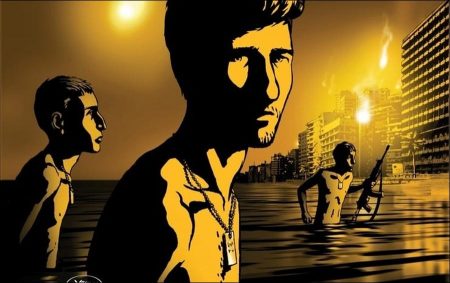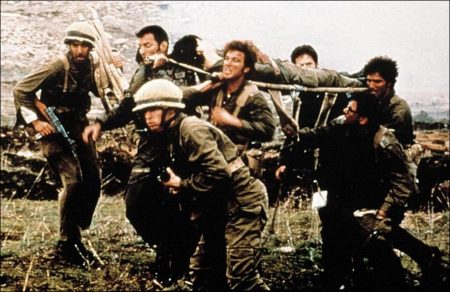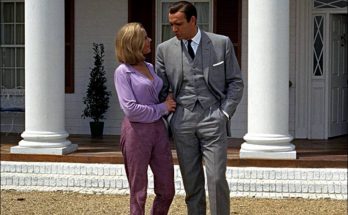
Israel – Palestine Problem in Cinema.
Israeli and Palestinian Cinemas. The Israeli-Palestinian Question has undoubtedly been the most important problem in world political history for many years. Both in the political arena and in the field of art, the problem seems to repeat itself countless times, and with the presence of the parties to the problem, the Israeli-Palestinian Question becomes an international issue and continues to remain unresolved even today.
There are dozens of publications on the historical development of the issue and numerous publications are prepared by the experts of the related disciplines (Politics, History, International Relations) and the issue is tried to shed light on the basis of historical information. At this point, just as other disciplines do, they do their part in the arts, they are not irrelevant to the problem so that it is one of the areas where the problem can express itself from time to time. Undoubtedly, the viewpoint of the cinema called Seventh Art on the Israeli-Palestinian Question is of great importance for reaching the masses.
Israel – Palestine Problem in Israeli Cinema and Israeli Films
Israel has been the main cause of the ongoing conflicts and turmoil in Palestine since its establishment in Palestine in 1948, and this occupation also affected Israel’s cinema, and the Israeli-Palestinian problem was not discredited by both Israeli directors and Palestinian directors. and form the main axis of the films around this problem.
For this reason, the political problems in today’s Israeli cinema are shaping the cinema, and the Israeli-Palestinian Question is brought to the audience with different perspectives. The directors of this period include Eytan Fox, Renen Schorr, Assi Dyan, Ari Sandel, Amos Gitai, Ari Folman and Eran Riklis. The aforementioned directors adapt the social conditions they live in to their cinemas and lead the Israeli cinema to make its name frequently mentioned in recent years.
In fact, the Israeli-Palestinian Question’s representation on the screen is also reflected in the Israeli director Ari Folman’s Waltz with Bashir. Waltz with Bashir discuss the massacre of the Israeli army that entered Beirut on September 15-29, 1982 in the Sabra and Shatila Palestinian refugee camps with the help of pro-Israeli phalanjists. Waltz with Bashir describes the effort to confront the past of Ari Folman, a former soldier who had lost his memory of those years. While the film takes shape around the psychological pains of a former soldier, he is weak in questioning why those killed there were killed.

The reason for this is that some Israeli directors think and feel their own future and the impact of social oppression at some point in making film directed towards the region. Bashir and Waltz is a kind of apology in the face of the massacre committed by Israeli soldiers and Christian phalanjists by Ariel Sharon’s orders. However, a soldier trying to confront this apology history cannot go beyond the effort and the “apology is quite insignificant to the events that happened. it was not; the person seemed to be playing a painful girl-play game with each other in each frame… the photograph can neither announce the buzz of flies, nor the white, heavy smell of death. It doesn’t show how we walk by jumping from one corpse to another.
It can be said that at this point Ari Folman tried to confront his own sorrows and tried to make a note of history about the “Sabra and Şatila Massacre” in the name of his own conscientious voice while realizing his personal narrative. It is possible to say that Folman approached the film in a humanistic way and that he tried to stay away from Israeli propaganda. The journey to the past begins with Folman’s pursuit of the nightmare he sees, finding his former front-mates and telling them about the memories of war from his own eyes, so that the audience witnesses the massacre.
At this point, it is seen that the film tells a human drama and the conscience of the individual predominates in the film. As the film begins to recall Folman’s memoirs, the audience sees the massacred people in Beirut, randomly bombed houses, and the cars accidentally scanned. In the film, the corruption and insensitivity experienced by the Israeli soldiers who have lost their humanity are seen in the most rude and disturbing way in time. The film is generally asked at the beginning of the film:
– Üb Do you see the images of Lebanon?
– No, not really.
– Are you sure?
– No
– What about Beirut, Sabra and Shatila?
– What about Sabra and Shatila?”
It starts with questions. From the beginning of the film, these questions are sought and tried to be answered. Although Beşirle Vals, Sabra and Şatila do not have a bold narrative about revealing the meaning of the massacre, the film of the massacre in which only three thousand five hundred civilians were killed in just three days is no more than a cross-section.
The role of Israel in the war, what it is looking for in Lebanon, who are fighting and who are willing to die, why people are gathered in the camps are almost never addressed. In addition to this, Bashir and Waltz, although it cannot go beyond the confessional function of a soldier, has the feature of political criticism and carries a cross-section of the Israeli-Palestinian Question to the Sabra and Shatila massacre.
Next Page: Perspective of Israeli films on the Palestinian issue.
Views: 265


